Comes a time when the forces of man and nature combine to produce an event so magical that it instantly becomes legend. It happened famously in a Woodstock pasture full of peace, love and rock n’ roll in the summer of ’69, and it also happened off the coast of California during the ’50s, when a different kind of music—BSAs, Triumphs and Velocettes—bellowed and tore at the Catalina Island dirt. And just as every child of the ’70s knew about Woodstock, every SoCal motorcyclist worth his handgrips grew up hearing about Catalina. Held from ’51 through ’58, the event became one of America’s top races, following only Daytona Beach in mystique. Off-road racers such as Bud Ekins claimed overall victory here to cement their names in legend.
And then it was over. Like the often-rumored Beatles reunions, the Catalina Grand Prix never resurfaced, despite the passage of a half-century. That is, until now. It took an L.A. car salesman by the name of Vinnie Mandzak and sagging island tourism to finally convince the Avalon City Council that holding another motorcycle race made good business sense. Last fall, a permit was issued on a one-time basis.
Rather than summertime, though, the revived 2010 Red Bull Catalina Grand Prix would be held in early December, the start of the rainy season, when the community most needed a cash injection. Long story short, it worked. Throughout the event, restaurateurs and innkeepers reveled in the best December weekend in memory, and a Saturday-night showing of Travis Pastrana's latest Nitro Circus movie sold out the landmark 1000-seat casino theater, purportedly for the first time in history.
Originally slated to use 80 percent dirt and 20 percent paved streets through the port town of Avalon (similar to the original GP), the 2010 version ultimately used more like 95 percent dirt (due to concerns about closing public roads), with just a ribbon of asphalt connecting sections together. The nearly 6-mile course began at a wide uphill starting area, funneled into a silty, 180-degree first turn that sent many riders to the ground, and wound through a long motocross section peppered with double jumps, tabletops, berms and a mudhole. From there, a steep descent merged riders onto a hillside horse trail where passing was nearly impossible. A short blast up the asphalt ribbon led to a fast, serpentine fireroad, where a strong motor and steel nerves could yield a ton of passes—and a bad mistake could bring a five-story swan dive off a cliff.
Altogether, the course was interesting, challenging, fun and reasonably safe—as long as you didn’t blow a crucial turn. All it lacked was the downtown streets of the original event, but that is a bureaucratic issue rather than any oversight on the part of My Cuz Vinnie Productions or the AMA’s District 37, which sanctioned the event.
There were 46 classes baked into 12 events over two days, starting with Saturday morning’s vintage race and ending with Sunday afternoon’s Pro race that attracted the likes of WORCS Champion Kurt Caselli, multiple Baja 1000 winners Kendall Norman and Johnny Campbell, Supercross legend Rick Johnson, America’s first 250cc world motocross champ Danny LaPorte and even mayhem maestro Travis Pastrana himself. But impressively, the rekindled Catalina GP also brought out some of history’s warriors, such as ISDT gold medalist Preston Petty, racing for the first time since the ’73 Baja 1000. The Catalina setting is wonderful, like a dirt setting for the Isle of Man, said the man who brought dirt riders the plastic fender. Entries also included ’60s Triumph flat-tracker John Hateley, ’50s Catalina competitor Homer Knapp (on the same ’28 Harley-Davidson JD he raced back then) and the irrepressible Malcolm Smith, who raced a new KTM in the 60+ A class.
Understandably, entering the Catalina GP took more planning than your average off-road race. Applications required a racing resumé, the entry fee was relatively stiff at $250, and arrangements called for dropping off bikes (with gas tanks empty) a week early at a freight terminal in L.A. Harbor, where they were subsequently loaded into semi-trailers and barged to Avalon. But they all magically arrived and were organized in neat rows near City Hall by Friday morning. After registering and getting some pricy race gas ($18 per gallon!) in a makeshift hazmat area, an ancient Yamaha and I were ready for the first Catalina GP in 52 years.
One might think a BSA Catalina Scrambler would be the logical choice for the vintage class. In reality, though, Yamaha’s factory entry here in ’58 changed racing forever as the Japanese company made its first international race appearance here. Ridden by Fumio Ito, the little red twin-cylinder 250cc works racer finished a credible sixth in the Lightweight class. Afterwards, Yamaha committed itself to race internationally to prove its products, and in doing so inspired Honda and the other Japanese manufacturers to do the same. But with only one of the original few Yamaha Catalina racers still extant, honoring this achievement required some creativity, as in morphing a ’62 YDS2 streetbike into the Ascot Scrambler replica shown here.
Despite an early start to California’s rainy season, thankfully Saturday dawned cool and dry. In what would become a pattern during the weekend, there was plenty of hurry up and wait before the start of each event. Finally, we got the order to fire up and head downhill into Avalon to parade along some of the same streets that had last hosted the GP in ’58. Crowds packed the sidewalks, yelling and waving, snapping photos and shooting video, and celebrating something truly incredible. Two-strokes and four-strokes, singles and twins, vintage BSAs and Triumphs, DKWs and Honda Elsinores, and Evolution-era Yamaha YZs and Husqvarnas all threaded through the streets, idled under sponsor Red Bull’s big inflatable arch, and then back toward the foothills to the starting area. The thunder was building.
The starting area was huge, several times the size of a football field, sectioned into multiple rows with chalk lines, ready to absorb over 100 bikes in the vintage race alone (and nearly 800 entries over the weekend). Despite my best efforts, the Yamaha Ascot Scrambler replica had barely an hour of test time prior to the event, so there was much to fret about prior to the start—including the readiness of the rebuilt engine, jetting and the durability of the notorious crankshaft-mounted clutch. Officials gave us three key instructions before the start: 1) Left hand on the back fender ’til you see the green flag; 2) Take the skull-and-crossbones warning signs literally—it’s a looong way down; and 3) Don’t hit any island foxes. Fortunately, these protected animals, which actually posed a serious threat to running the event, were all probably safe in their dens as the race began (and are still doing fine afterward).
Rows were flagged off one at a time, with about 30 seconds in between. Transponders simplified scoring and could track individual lap times even among riders starting several rows apart. Off blasted the Evolution bikes. Off exploded the vintage CZs and Elsinores. Off roared the older BSA and Triumph twins. And off shrieked the Ascot Scrambler replica, surging into the powerband on the way up the start hill, plowing through the silt at the hairpin, and then bounding downhill on the first of four long laps. That may not sound like much, but at more than 11 minutes each that’s over 45 minutes of racing—plenty of time to get tired, thirsty and sore aboard this 48-year-old hell-burner.
After surviving the first turn, my next concern was a nasty downhill/uphill combination that separated the starting area from the motocross section. Though no one was allowed to pre-run the course, I did jog around it on Friday, and discovered that this particular uphill was around three stories high and so steep that even walking up it was difficult. Would the old Yamaha make it? There was only one way to find out...
In hill-climbing, momentum is your friend. Swinging wide at the bottom of the ravine allowed a longer acceleration zone, and the Yamaha dug hard into the powerband, shifted into second, attacked the hill with lips back and teeth baredand made it! What had been my biggest concern on the course amounted to a piece of cake thanks to engine builder Scott Clough’s torquey custom pipes, a fat Dunlop trials tire and a big rear sprocket. Front wheel clawing at the air, the YDS2 rocketed over the hilltop and charged toward the motocross course and our next obstacle: the massive mudhole. I found out that my ignition wasn’t waterproof when I landed in the hole and it stopped, admitted Bonneville speed record-holder Ralph Hudson later. Fortunately, I had enough momentum that I didn’t get stuck. Skirting the edge of the pond, I spared the Yamaha similar ignominy and continued apace, passing riders from earlier rows sporadically as the field gnawed through the MX jumps, bumps and berms. This area also hosted thousands of spectators cheering loudly—especially for big air and crashes.
With perhaps 3 inches of wheel travel and hundreds of pounds of girth, there wasn’t much point in trying to jump anything but the tabletops for fear of causing some calamitous metal failure, so that’s what we did: jump the tables and roll the doubles. It worked fine, and by the time the Yamaha and I plunged down another steep hillside toward the long single-track horse trail, we were already picking up the scent of more rivals. The trail eventually spat us into a silty, rocky creek bed that became even more so as the weekend progressed, but which quickly delivered us to a welcome bit of asphalt.
Next falling prey to the shrieking two-stroke was Triumph TR6C-mounted Dimitri Coste, who had flown his bike over from France for the event. He rode it well, staying ahead for the duration of the horse trail and even accelerating away on the dragstrip-like ribbon of asphalt that ushered us to the fireroad. Digging into the powerband and shifting to fifth, the YDS2 sounded like a real racer, nearly a match for a British twin well over twice its size. No wonder the soon-to-arrive TD1 roadracers would quickly decimate the four-stroke stalwarts on the tarmac.
Without years of California fireroading in their blood, perhaps Coste and other riders were nervous about falling to their dooms off the steep edge, were they to err much in steering or braking. But to those used to putting down roadrace speeds on dirt, the fireroad section was bliss. High-speed sliding turns, on-the-brakes hairpins, off-camber sneakers and flat-out straights all had one thing in common: a steep hill on your right and a sheer drop on your left. With its big, flat-track-sized tires, brilliant Race Tech suspension and a willing powerband, the little Yamaha was more than at home, soon targeting a bike in its gun sights. It was Coste aboard the big Trumpet, and he soon enough ran wide, allowing the YDS2 to scoot inside. The same fate befell Brice Cooper on a big-bang ’74 Yamaha SC500 (The powerband is like hitting a wasp’s nest, he said), Ted Van Doorn on his Premier 500 thumper and a late-model Husky as the fireroad turned downhill in the long run back to the start/finish area.
It happened on the second lap. Having just completed a half-dozen hard-earned passes, I missed a corner and ended up wedged between a couple of haybales and a dirt abutment alongside the fireroad. No matter, the Yamaha bump-started easily enough, and we once again rejoiced in passing riders on our way to the Premier Lightweight Expert win and posting the 22nd fastest lap time among 104 vintage bikes (including long-travel ’80s Evolution-class motocrossers). Other than a few vexing neutrals, the bike ran absolutely perfect—amazing, considering its long slumber and hurried revival. That’s 400 pounds of soul.
With thousands of spectators lining the route wherever they could find a foothold on the steep terrain, helicopters flying overhead and cameramen from Dana Brown's forthcoming On Any Sunday III recording the action, you had to be there to fully grasp the stoke that the rekindled Catalina GP generated. All told, by late Sunday afternoon, some 758 riders had enjoyed the 2010 Red Bull Catalina Grand Prix. JCR's Kendall Norman won the Pro race after early leader Kurt Caselli and third-place Travis Pastrana's bikes broke, the hotels and eateries were booked solid, and the feared rain didn't begin in earnest until after the last race. That night, I called organizer Mandzak on his cell phone to see about results. I'm gonna have to call you back, he said. It's dark. It's raining. I haven't slept in 40 hours and I'm up in the hills with the city manager and track builder picking up trash so the foxes won't eat it. Good man, our Cousin Vinnie.
Afterwards, the Avalon City Council called the 2010 Red Bull Catalina Grand Prix an overwhelming success that infused nearly $2 million into the local economy. Let’s hope for a repeat in 2011. Ultimately the decision rests with city officials, and while there was no word at press time, Mandzak confided, If they don’t do it again, I think the whole town will rebel!










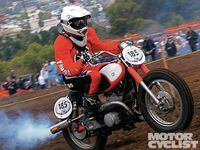

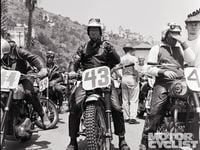


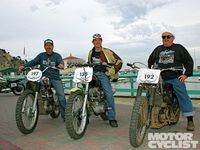
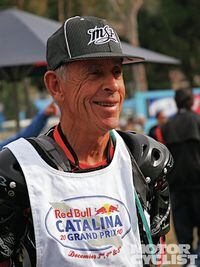

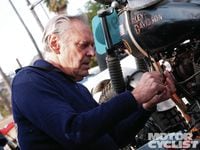
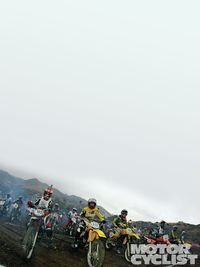


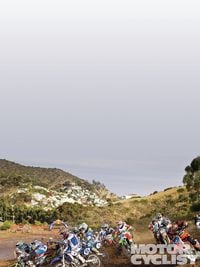


/cloudfront-us-east-1.images.arcpublishing.com/octane/VZZXJQ6U3FESFPZCBVXKFSUG4A.jpg)
/cloudfront-us-east-1.images.arcpublishing.com/octane/QCZEPHQAMRHZPLHTDJBIJVWL3M.jpg)
/cloudfront-us-east-1.images.arcpublishing.com/octane/HXOUJXQWA5HBHGRO3EMJIGFMVI.jpg)

/cloudfront-us-east-1.images.arcpublishing.com/octane/3TIWWRV4JBBOLDVGRYECVVTA7Y.jpg)
/cloudfront-us-east-1.images.arcpublishing.com/octane/KIX5O23D5NAIBGFXBN3327DKZU.jpg)
/cloudfront-us-east-1.images.arcpublishing.com/octane/7GJYDUIPXRGMTMQKN6ONYOLBOU.jpg)
/cloudfront-us-east-1.images.arcpublishing.com/octane/MUQLOVLL2ZDGFH25ILABNBXKTI.jpg)
/cloudfront-us-east-1.images.arcpublishing.com/octane/TNOU5DNE2BC57MFPMGN2EIDXAM.jpg)
/cloudfront-us-east-1.images.arcpublishing.com/octane/GTCXACQGJ5HAPDTGWUQKDEH44E.jpg)
/cloudfront-us-east-1.images.arcpublishing.com/octane/S35YGSEMEZB4BLTDJTSZPF4GLA.jpg)
/cloudfront-us-east-1.images.arcpublishing.com/octane/5UOT6HPX2JFMRJAX6EH45AR4MQ.jpg)
/cloudfront-us-east-1.images.arcpublishing.com/octane/OKWOJWAKP5EP3OACCRRWPCIX2Q.jpg)
/cloudfront-us-east-1.images.arcpublishing.com/octane/2WF3SCE3NFBQXLDNJM7KMXA45E.jpg)
/cloudfront-us-east-1.images.arcpublishing.com/octane/G4MG6OUCJNBSHIS2MVVOTPX65E.jpg)
/cloudfront-us-east-1.images.arcpublishing.com/octane/IIGGWFOTOJGB7DB6DGBXCCMTDY.jpg)
/cloudfront-us-east-1.images.arcpublishing.com/octane/QSTCM6AVEZA5JJBUXNIQ3DSOF4.jpg)
/cloudfront-us-east-1.images.arcpublishing.com/octane/U4I7G625B5DMLF2DVIJDFZVV6M.jpg)
/cloudfront-us-east-1.images.arcpublishing.com/octane/B6XD6LS6IVCQPIU6HXDJSM3FHY.jpg)
/cloudfront-us-east-1.images.arcpublishing.com/octane/ICL63FEDDRDTTMINYICCEYGMDA.jpg)
/cloudfront-us-east-1.images.arcpublishing.com/octane/FCGZHQXRBZFLBAPC5SDIQLVF4I.jpg)
/cloudfront-us-east-1.images.arcpublishing.com/octane/WNOB6LDOIFFHJKPSVIWDYUGOPM.jpg)

/cloudfront-us-east-1.images.arcpublishing.com/octane/X33NU3E525ECRHXLNUJN2FTRKI.jpg)